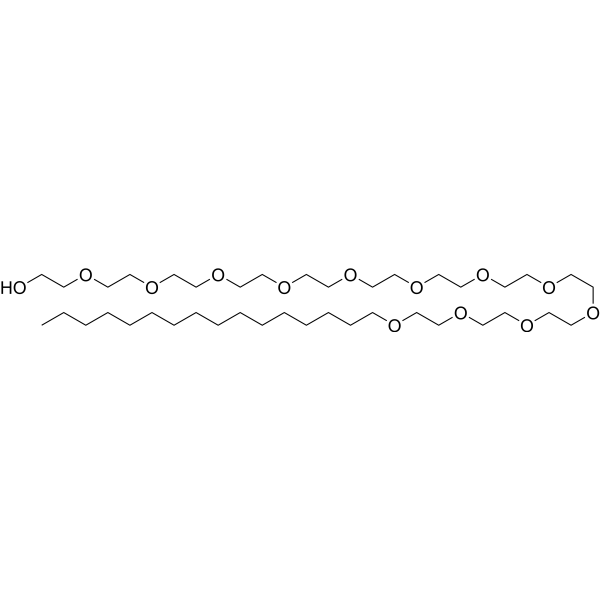13149-83-2
| Name | 2-[2-[2-[2-[2-[2-[2-[2-[2-[2-[2-(2-hexadecoxyethoxy)ethoxy]ethoxy]ethoxy]ethoxy]ethoxy]ethoxy]ethoxy]ethoxy]ethoxy]ethoxy]ethanol |
|---|---|
| Synonyms |
1-Hydroxy-3,6,9,12,15,18,21,24,27,30,33,36-dodecaoxa-dopentacontan
Dodeca-oxyaethylen-glykol-monohexadecylaether 3,6,9,12,15,18,21,24,27,30,33,36-Dodecaoxadopentacontan-1-ol 35-hexadecyloxy-3,6,9,12,15,18,21,24,27,30,33-undecaoxa-pentatriacontan-1-ol |
| Description | PEG 12 cetostearyl ether can be used as an excipient. Pharmaceutical excipients, or pharmaceutical auxiliaries, refer to other chemical substances used in the pharmaceutical process other than pharmaceutical ingredients. Pharmaceutical excipients generally refer to inactive ingredients in pharmaceutical preparations, which can improve the stability, solubility and processability of pharmaceutical preparations. Pharmaceutical excipients also affect the absorption, distribution, metabolism, and elimination (ADME) processes of co-administered drugs[1]. |
|---|---|
| Related Catalog | |
| References |
| Molecular Formula | C40H82O13 |
|---|---|
| Molecular Weight | 771.07 |
| Exact Mass | 770.57600 |
| PSA | 130.99000 |
| LogP | 5.65920 |
